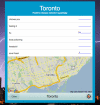Infodemiology and infoveillance: framework for an emerging set of public health informatics methods to analyze search, communication and publication behavior on the Internet
- PMID: 19329408
- PMCID: PMC2762766
- DOI: 10.2196/jmir.1157
Infodemiology and infoveillance: framework for an emerging set of public health informatics methods to analyze search, communication and publication behavior on the Internet
Abstract
Infodemiology can be defined as the science of distribution and determinants of information in an electronic medium, specifically the Internet, or in a population, with the ultimate aim to inform public health and public policy. Infodemiology data can be collected and analyzed in near real time. Examples for infodemiology applications include the analysis of queries from Internet search engines to predict disease outbreaks (eg. influenza), monitoring peoples' status updates on microblogs such as Twitter for syndromic surveillance, detecting and quantifying disparities in health information availability, identifying and monitoring of public health relevant publications on the Internet (eg. anti-vaccination sites, but also news articles or expert-curated outbreak reports), automated tools to measure information diffusion and knowledge translation, and tracking the effectiveness of health marketing campaigns. Moreover, analyzing how people search and navigate the Internet for health-related information, as well as how they communicate and share this information, can provide valuable insights into health-related behavior of populations. Seven years after the infodemiology concept was first introduced, this paper revisits the emerging fields of infodemiology and infoveillance and proposes an expanded framework, introducing some basic metrics such as information prevalence, concept occurrence ratios, and information incidence. The framework distinguishes supply-based applications (analyzing what is being published on the Internet, eg. on Web sites, newsgroups, blogs, microblogs and social media) from demand-based methods (search and navigation behavior), and further distinguishes passive from active infoveillance methods. Infodemiology metrics follow population health relevant events or predict them. Thus, these metrics and methods are potentially useful for public health practice and research, and should be further developed and standardized.
Keywords: epidemiology; infodemiology; infodemic; infoveillance; internet; forecasting; population surveillance; influenza; epidemic; pandemic; public health; consumer health information; epidemiological indicators; quality indicators; information storage and retrieval; biosurveillance; syndromic surveillance; human.
Conflict of interest statement
None declared.
Figures



References
-
- Eysenbach Gunther. Infodemiology: tracking flu-related searches on the web for syndromic surveillance. AMIA Annu Symp Proc. 2006:244–8. http://www.pubmedcentral.nih.gov/articlerender.fcgi?tool=pubmed&pubmedid...86095 - PMC - PubMed
-
- Eysenbach Gunther. SARS and population health technology. J Med Internet Res. 2003 Jun 30;5(2):e14. doi: 10.2196/jmir.5.2.e14. http://www.jmir.org/2003/2/e14/ - DOI - PMC - PubMed
-
- Wilson K, Brownstein JS. Early detection of disease outbreaks using the Internet. CMAJ. 2009 Mar 12; doi: 10.1503/cmaj.1090215. http://www.cmaj.ca/cgi/pmidlookup?view=rapidpdf&pmid=19282363cmaj.1090215 - DOI - PMC - PubMed
Publication types
MeSH terms
LinkOut - more resources
Full Text Sources

